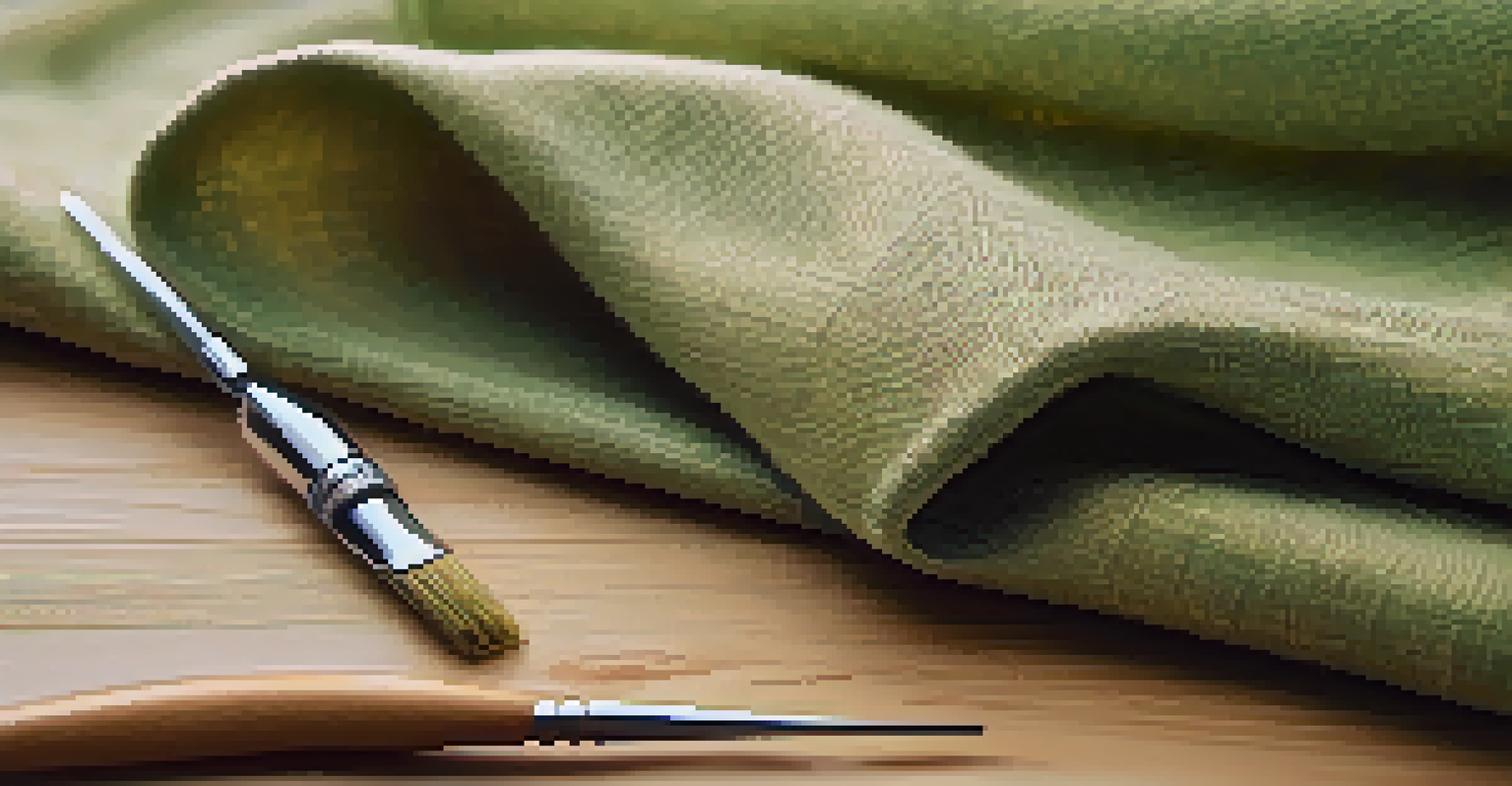Exploring the Role of Eco-Friendly Fabrics in Luxury Fashion

Understanding Eco-Friendly Fabrics and Their Importance
Eco-friendly fabrics are materials made from sustainable resources that minimize environmental impact. They can be derived from organic cotton, hemp, bamboo, or even recycled materials. The importance of these fabrics lies in their ability to reduce waste and pollution while promoting ethical production practices.
Fashion is the armor to survive the reality of everyday life.
In recent years, consumers have become increasingly aware of their purchasing choices, leading to a demand for more sustainable options in luxury fashion. This shift is not just about looking good; it's about feeling good about the impact our purchases have on the planet. Brands are recognizing that eco-friendly fabrics resonate with conscious consumers.
By choosing eco-friendly fabrics, luxury fashion designers can create garments that align with their brand values while appealing to a growing market segment. This trend isn't just a fleeting fad; it's a fundamental change in how fashion is produced and consumed.
The Benefits of Eco-Friendly Fabrics for Fashion Brands
Eco-friendly fabrics offer numerous benefits for fashion brands, starting with their positive impact on brand image. Companies that prioritize sustainability often attract a loyal customer base that values ethical practices. This can lead to increased sales and a stronger market position.

Additionally, using sustainable materials can result in lower production costs in the long run. Although eco-friendly fabrics may have a higher initial investment, their durability and lesser environmental impact can reduce costs related to waste management and resource consumption.
Eco-Friendly Fabrics Reduce Impact
Eco-friendly fabrics are made from sustainable resources that help minimize environmental harm and promote ethical production practices.
Finally, adopting eco-friendly fabrics allows brands to participate in the growing movement towards sustainable fashion, positioning themselves as leaders in innovation. By being at the forefront of this change, brands can differentiate themselves in a crowded market.
Popular Eco-Friendly Fabrics in Luxury Fashion Today
Several eco-friendly fabrics are gaining traction in luxury fashion, including organic cotton, Tencel, and linen. Organic cotton is grown without harmful pesticides, making it a safer choice for the environment and the people who work with it. Tencel, made from sustainably sourced wood pulp, is known for its softness and biodegradability.
Sustainability is no longer about doing less harm. It’s about doing more good.
Another popular option is linen, derived from the flax plant, which requires minimal water and pesticides to grow. Its natural breathability and durability make it a sought-after choice for high-end garments. These fabrics not only perform well but also align with the values of today's conscious consumers.
Moreover, brands are increasingly exploring innovative materials like Piñatex, made from pineapple leaf fibers, and recycled polyester from plastic bottles. These fabrics showcase the creativity of designers and their commitment to sustainability.
Challenges in Implementing Eco-Friendly Fabrics
While eco-friendly fabrics hold great promise, there are challenges in their implementation within luxury fashion. One significant hurdle is the cost associated with sourcing and producing sustainable materials. Many luxury brands are accustomed to traditional fabrics that may be cheaper, which can deter them from making the switch.
Another challenge is the availability of high-quality eco-friendly fabrics that meet the standards of luxury fashion. Brands often prioritize aesthetics and performance, and they may struggle to find sustainable options that don't compromise on these aspects. This can lead to hesitation in fully committing to eco-friendly practices.
Consumer Demand Drives Sustainable Fashion
As awareness of climate change and ethical production rises, consumers are increasingly seeking high-quality, sustainable options in luxury fashion.
Lastly, there is a need for greater consumer education on the benefits and value of eco-friendly fabrics. Many consumers may not fully understand the difference between traditional and sustainable materials, which can affect their purchasing decisions. This underscores the importance of transparency in the fashion industry.
The Role of Designers in Promoting Eco-Friendly Practices
Designers play a crucial role in promoting the use of eco-friendly fabrics in luxury fashion. Their creativity and vision can inspire the industry to embrace sustainable practices and rethink traditional approaches. By integrating eco-friendly materials into their collections, designers can showcase their commitment to the environment.
Through collaboration and innovation, designers can push the boundaries of what is possible with eco-friendly fabrics. This can lead to the development of new techniques, patterns, and styles that make sustainable clothing just as desirable as traditional luxury items. It's about changing perceptions and setting new standards.
Furthermore, designers can leverage their platforms to raise awareness about sustainability issues within the fashion industry. By sharing their stories and experiences, they can encourage consumers to make more informed choices and support brands that prioritize eco-friendly practices.
Consumer Demand for Sustainable Luxury Fashion
Consumer demand for sustainable luxury fashion is on the rise, influenced by factors such as climate change awareness and the ethical treatment of workers. Today's shoppers are not just looking for stylish pieces; they want to know the story behind their clothing and the impact it has on the world. This shift is driving brands to reconsider their sourcing and production methods.
Luxury fashion consumers are increasingly willing to invest in high-quality, eco-friendly pieces, recognizing that these garments often come with a higher price tag due to their sustainability. This growing acceptance reflects a broader trend towards valuing quality and ethical production over fast fashion.
Designers Influence Eco-Friendly Trends
Designers play a vital role in promoting eco-friendly practices, inspiring innovation and encouraging consumers to support sustainable fashion choices.
As more consumers prioritize sustainability, luxury brands have no choice but to adapt to these changing preferences. By responding to this demand, they can tap into a lucrative market while contributing to a more sustainable future for the fashion industry.
The Future of Eco-Friendly Fabrics in Luxury Fashion
The future of eco-friendly fabrics in luxury fashion looks promising, with ongoing innovations and advancements in sustainable materials. As technology evolves, we can expect to see new fabrics that not only meet luxury standards but also offer enhanced sustainability features. This could include improved durability, biodegradability, and reduced environmental impact.
Additionally, the growing collaboration between fashion designers, textile manufacturers, and sustainability experts will pave the way for more eco-friendly options. This synergy can lead to the creation of unique materials that blend luxury with environmental consciousness, appealing to discerning consumers.

Ultimately, as the fashion industry continues to evolve, eco-friendly fabrics will likely become mainstream in luxury fashion. This shift represents a significant step towards a more sustainable future, where style and responsibility go hand in hand.